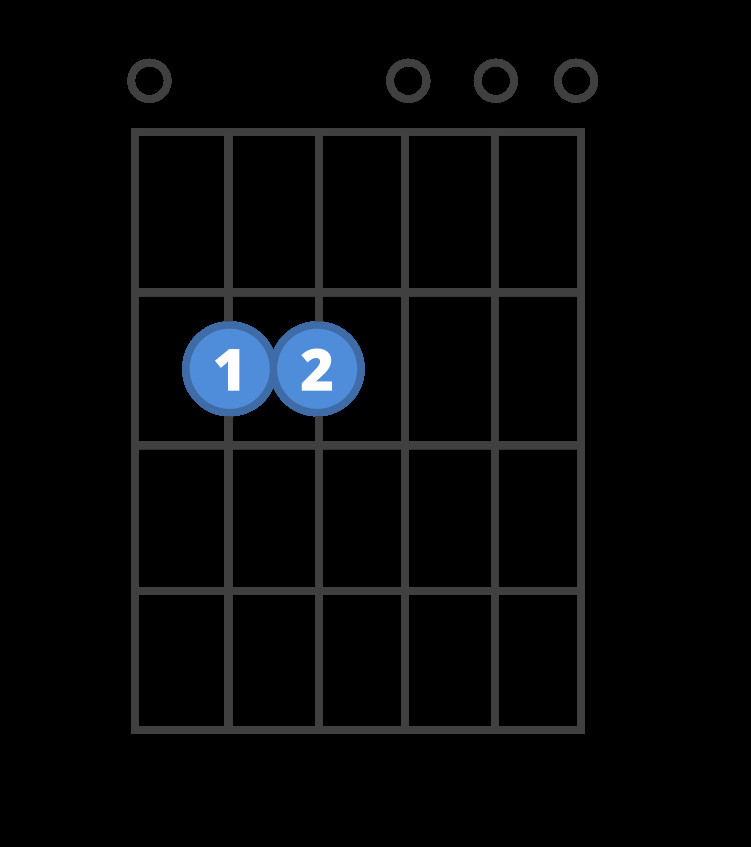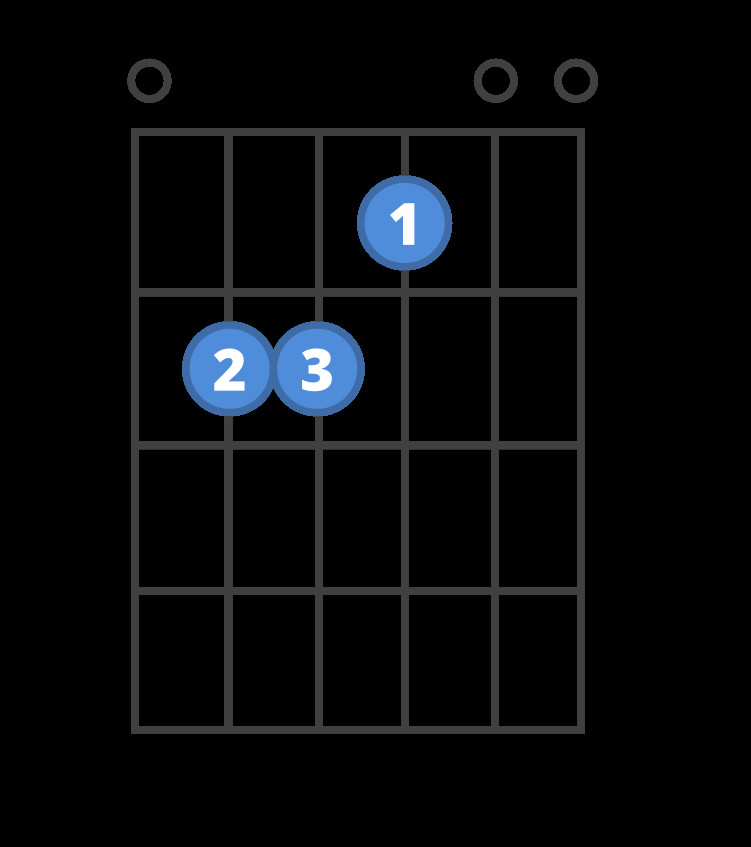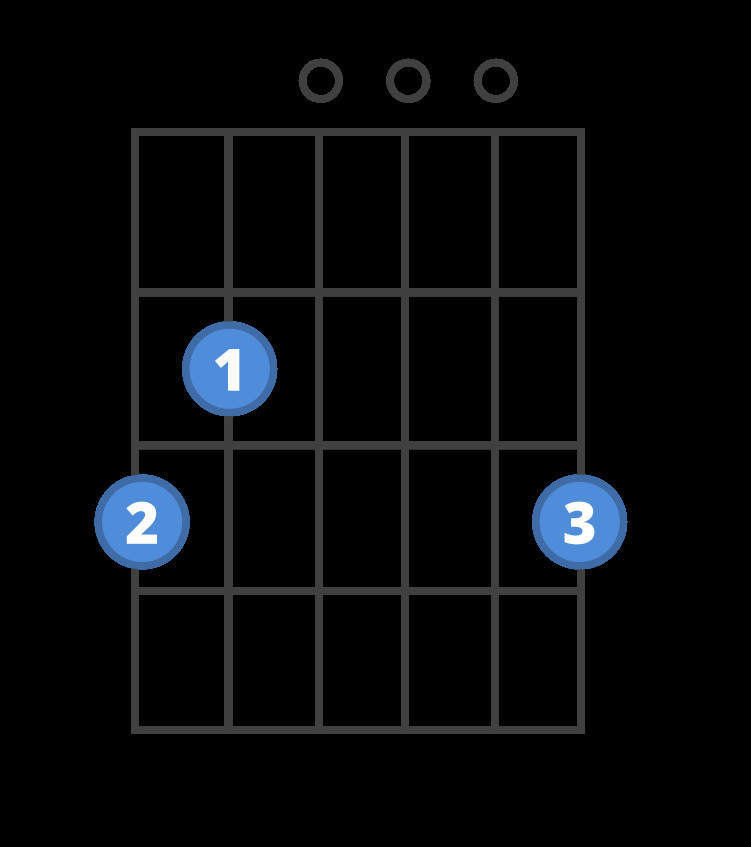The E minor chord (often written as Em) is a foundational chord for guitarists of all levels, especially beginners. It’s known for its melancholic yet versatile sound, appearing in countless songs across genres. Fortunately, the e minor chord is also one of the easiest chords to learn on the guitar, requiring just two fingers to play. This guide will walk you through how to play the E Minor Chords Guitar, offer practice tips, and explore its musical context.
How to Play the E Minor Chord
The e minor chord is remarkably simple to form. Follow these easy steps to get started:
- Locate the Second Fret: Find the second fret on your guitar’s neck. This is the metal bar two frets away from the headstock.
- Place Your Middle Finger: Position your middle finger (usually the 2nd finger) on the 5th string (A string) at the 2nd fret.
- Place Your Ring Finger: Place your ring finger (usually the 3rd finger) on the 4th string (D string) at the 2nd fret.
- Strum All Strings: Strum all six strings of your guitar, from the thickest (lowest E) to the thinnest (highest e).
 E minor chord diagram for guitar. Learn how to play Em chord with this finger position.
E minor chord diagram for guitar. Learn how to play Em chord with this finger position.
Listen for a clear, resonant sound. If you hear buzzing or muffled notes, ensure your fingers are pressing down firmly just behind the fret and that you are strumming cleanly.
Why Use These Fingers for Em?
You might wonder if you could use your index and middle fingers instead. While technically possible, using your middle and ring fingers for the e minor chord offers significant advantages for beginner guitarists. This fingering:
- Prepares for Chord Changes: Leaving your index finger free makes transitions to other common chords like C major, G major, D major, and A minor much smoother and faster. These chords are often played together in beginner songs, and efficient chord changes are crucial for fluid playing.
- Develops Finger Dexterity: Using the middle and ring fingers early on helps develop strength and independence in these fingers, which is beneficial for playing more complex chords and techniques later.
E Minor vs. E Major: Understanding the Difference
If you’re already familiar with the E major chord, you’ll notice the e minor chord is very similar. In fact, the only difference is the removal of one finger!
Let’s compare the chord diagrams:
E Minor (Em)
 E minor chord diagram for guitar. Learn how to play Em chord with this finger position.
E minor chord diagram for guitar. Learn how to play Em chord with this finger position.
E Major (E)
 E major chord diagram for guitar. See the difference between E major and e minor chords.
E major chord diagram for guitar. See the difference between E major and e minor chords.
Basic Music Theory: The key difference lies in a single note. In the E major chord, the G note is raised to a G# (G sharp) on the 3rd string, 1st fret. This creates a major third interval, giving E major its bright, happy sound. By removing the finger from the 3rd string, we revert to a natural G note, creating a minor third interval and the characteristically sadder sound of e minor.
Practice Techniques for Mastering the Em Chord
Consistent practice is key to making the e minor chord feel natural and sound great. Here are some effective practice techniques:
-
The On-Off Drill:
- Form the Em chord shape.
- Strum the chord cleanly for four counts.
- Remove your fingers completely from the strings for four counts.
- Replace your fingers back into the Em chord shape and repeat.
This drill helps muscle memory and strengthens your ability to quickly and accurately form the chord.
-
Chord Switching Practice: Once comfortable with the On-Off Drill, practice switching between Em and other chords. Good chords to start with are:
-
Em to G: G major is another common and relatively easy chord.
 G major chord diagram for guitar. Example of a chord to practice switching with e minor.
G major chord diagram for guitar. Example of a chord to practice switching with e minor. -
Em to C: C major is another fundamental chord in many songs.
-
Em to D: D major provides a different tonal color and is frequently paired with Em.
Focus on smooth transitions between chords, minimizing pauses and maintaining a steady rhythm.
-
Songs to Play with E Minor Chords
The e minor chord is incredibly versatile and appears in countless songs. Here are some popular chord progressions and song examples that heavily feature Em:
- Em – C – G – D: This is an extremely common and versatile chord progression used in songs across many genres.
- Em – Am – C – B7: A classic minor key progression with a slightly more dramatic feel.
- Songs Examples:
- “Knockin’ on Heaven’s Door” – Bob Dylan (G, D, Am, Em, C)
- “Hallelujah” – Leonard Cohen (C, G, Am, F, Em)
- “Creep” – Radiohead (G, B, C, Cm, Em)
Experiment with playing along to these songs to practice your e minor chord in a musical context.
Expand Your Chord Knowledge
Once you’ve mastered the e minor chord, there’s a whole world of guitar chords to explore! Consider learning these chords next, as they complement e minor well and are also beginner-friendly:
- G Major: A bright and uplifting major chord.
- C Major: Another essential major chord, often paired with G and D.
- D Major: A versatile major chord with a slightly brighter sound than C.
- A Minor: A common minor chord that shares a similar finger pattern concept to Em.
- D Minor: Another fundamental minor chord, adding more depth to your minor key vocabulary.
By mastering the e minor chords guitar and expanding your chord library, you’ll unlock a vast repertoire of songs and significantly enhance your guitar playing journey. Keep practicing, and enjoy the musical possibilities!
